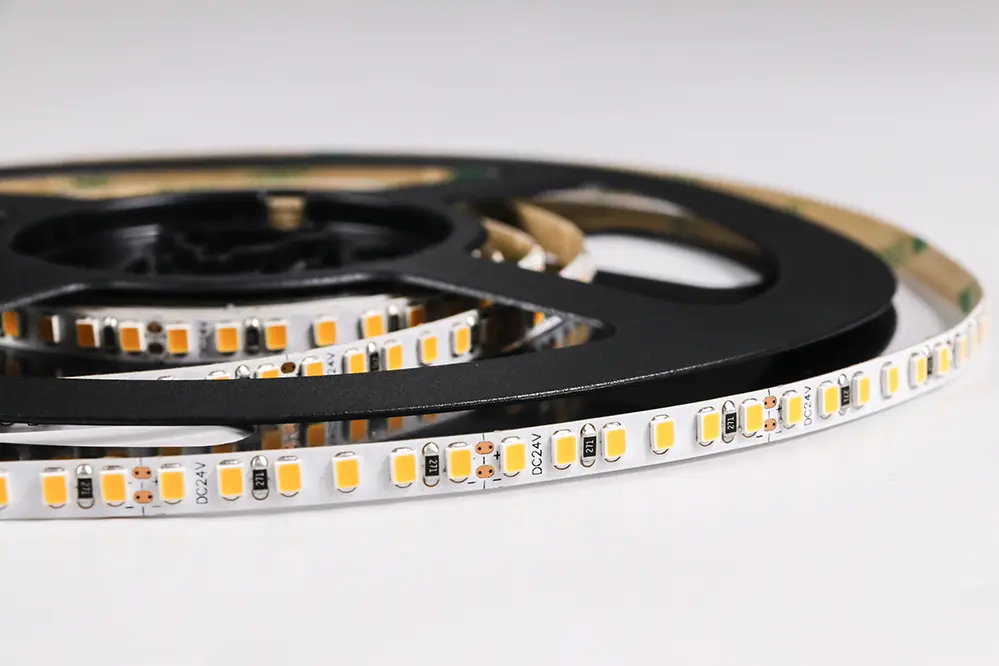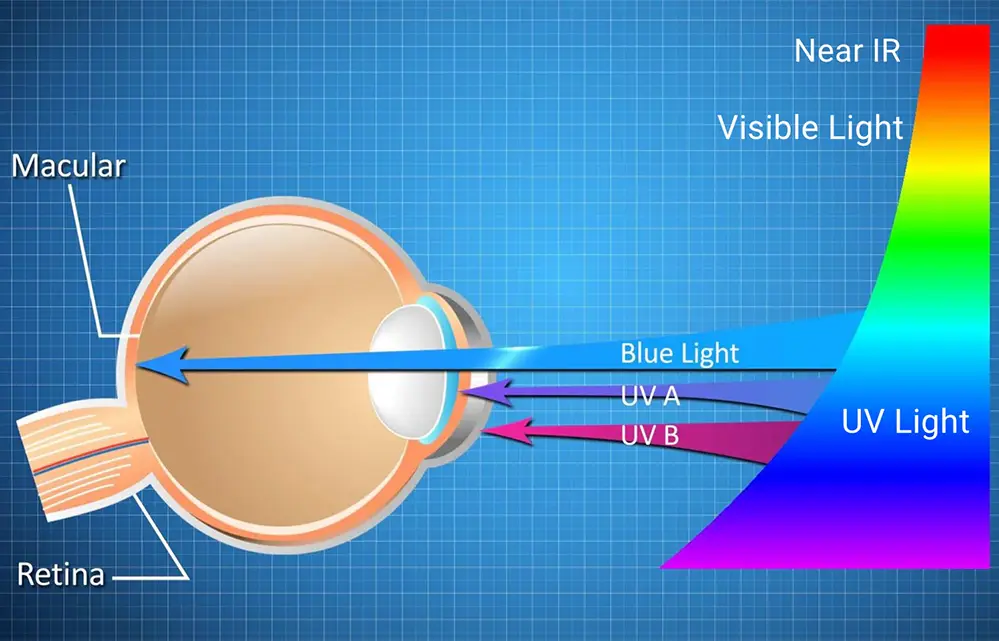Do LED Strip Lights Cause Cancer: The Truth Revealed
- 2024-05-08 12:41
- UNITOP
Are you concerned about the potential health risks of LED strip lights? Look no further! In this blog post, we will reveal the truth about whether LED strip lights cause cancer. As an expert in the field, we have the answers you've been searching for.
LED strip lights do not cause cancer. Extensive research and studies have shown that LED lights, including LED strip lights, emit a minimal amount of non-ionizing radiation, which is not harmful to human health. The low levels of electromagnetic radiation emitted by LED strip lights are well within the safety limits set by regulatory authorities. Therefore, you can enjoy the benefits of LED strip lights without worrying about any cancer risks.
But that's not all! In the following sections, we will delve deeper into the science behind LED strip lights and their impact on human health. We will address common misconceptions, provide insights from experts, and offer tips for safe usage. So, keep reading to gain a comprehensive understanding of the topic and make informed decisions about your lighting choices.
Understanding LED Strip Lights

LED strip lights consist of surface-mounted, long-lasting led lights that emit less blue light on flexible circuitry. This modern form of illumination offers customizable and versatile lighting applications, enhancing both functionality and aesthetics.
Given their low energy usage and longevity, LED strip lights are increasingly favored for residential and commercial settings. Emitting light through electroluminescence, LEDs produce brightness with greater efficiency compared to traditional incandescent bulbs, which translates to less waste in the form of heat.
The term "light-emitting diode" and "LED technology" are often interchangeably used to denote this innovative lighting solution that has transformed the way we illuminate spaces.
Composition and Function
LED strip lights are an assemblage of small, efficient LEDs on a flexible circuit board adaptable to diverse applications.
LED technology harnesses semiconductors to produce light without the high heat of traditional bulbs.
By utilizing a low-voltage power supply, these strips with led lights offer bright illumination while maintaining a cool operational temperature, hence reducing fire risk and enhancing safety.
The LEDs within the strips are typically encased in a silicone or epoxy resin, providing durability and resistance to moisture, which is also advantageous for protecting the skin from any potential irritation.
Comparison with Traditional Lighting
LED strip lights signify a major leap forward in lighting technology when juxtaposed with traditional lighting sources.
- Energy Efficiency: LEDs consume significantly less energy than incandescent and fluorescent lights, resulting in lower utility bills and reduced environmental impact.
- Longevity: An LED strip can last up to 50,000 hours, far surpassing the lifespan of traditional light bulbs.
- Heat Emission: LEDs emit much less heat, making them safer to operate and less likely to contribute to heat build-up in a space.
- Durability: The solid-state construction of LED strips offers greater resistance to shock, vibration, and wear compared to fragile incandescent bulbs.
- Eco-Friendliness: With no mercury or harmful substances, LEDs are more environmentally friendly than fluorescent lighting, which contains hazardous materials.
This paradigm shift has implications for maintenance, operating costs, and the environment.
Considering spectral output, LEDs provide a range of color temperatures and can mimic natural light while emitting less blue light, which can be beneficial in reducing the harsh effects often attributed to fluorescent lighting and less disruptive to natural melatonin release.
Exploring Cancer Risks

When it comes to assessing the potential carcinogenic risks associated with LED strip lights, posing the right question is key, and scientific evidence is vital. Presently, there is no substantial data suggesting a direct causal link between LED exposure and the development of cancer. It is prudent to mention, however, that any source of light must be evaluated not just for its immediate benefits but also for its long-term effects on health. Studies examining the biological effects of artificial light, including LEDs, typically focus on parameters such as phototoxicity, circadian rhythm disruption, and exposure to certain wavelengths, including the often-discussed blue light. These factors could potentially have implications for health over time, although current research does not directly correlate them with carcinogenesis. It is essential for continued rigorous investigation into these matters to ensure safety and to accurately inform the public.
Scientific Studies on LEDs
Scientific scrutiny has methodically examined various aspects of LEDs, delineating their impact on health.
- Evaluating Photobiological Safety: Studies have assessed the photobiological risks posed by LED lighting, including potential damage induced by intense blue light.
- Investigating Circadian Rhythm Disruption: Research has focused on how unnatural light exposure from LEDs can disturb sleep patterns and hormonal functions.
- Analyzing Wavelength Exposure: Specific wavelengths of light emitted by LEDs have been analyzed for their biological effects, although links to cancer remain unsubstantiated.
The preponderance of evidence does not indicate a carcinogenic risk from LED strips.
Nevertheless, ongoing research into the effects of blue light exposure is imperative to maintain a comprehensive understanding and to mitigate any emergent health concerns.
Electromagnetic Fields and Health Effects
Electromagnetic fields (EMFs), integral to the operation of LED strip lights, have raised some health concerns.
In residential and commercial environments, LED lighting systems function within the low to medium frequency spectrum. While these frequencies are non-ionizing and deemed generally safe, prolonged exposure, especially to high-intensity fields, could theoretically pose health risks, although empirical data is inconclusive. The scientific community continually scrutinizes such claims, ensuring that the risk, if any, is minimal.
EMFs emitted from LED products are typically below thresholds known to cause adverse health effects. Nonetheless, studying the influence of long-term exposure to EMFs remains a topic of investigation to preemptively address possible health concerns.
Moreover, guidelines and regulations on EMF emissions exist to protect the public health. Strict compliance with these standards is paramount, as it helps mitigate any potential risks associated with electromagnetic exposure from LED lighting solutions. These guidelines ensure that EMF levels stay well within the limits that have been proven to be safe for human exposure.
LED Exposure Guidelines

In establishing LED Exposure Guidelines, regulatory bodies and health organizations emphasize the importance of adherence to established safety standards. The guidelines not only consider the intensity and duration of exposure but also the spectral characteristics of the light emitted. For instance, International Commission on Non-Ionizing Radiation Protection (ICNIRP) sets various exposure limits based on frequency and exposure duration to mitigate potential risks. These guidelines are critical in the design and manufacturing processes, as they inform the necessary levels of shielding and emission control. Hence, it is of paramount importance that both manufacturers and consumers remain vigilant in respecting these guidelines to avoid photobiological risks associated with excessive exposure to LED lighting.
Official Recommendations
In light of the prevailing concerns, it is imperative to follow official recommendations for safe LED strip light usage. These recommendations serve as a bulwark against the unfounded claims and provide a factual basis for understanding any associated risks.
Manufacturers and consumers alike are urged to comply with standards set by recognized authorities such as the American National Standards Institute (ANSI) and the Illuminating Engineering Society (IES). These entities provide guidelines that cover the optical safety, quality of light, and compatibility of LED lighting products. They factor in photobiological safety management, which is instrumental in ensuring that the LED products you utilize do not pose a hazard to health.
Furthermore, focusing on product quality and compliance with certifications like Underwriters Laboratories (UL) and the CE marking ensures that consumers are protected. Given the myriad products available on the market, it is essential to choose those that have undergone rigorous testing and adhere to strict safety standards. This is particularly crucial when considering the installation of LED strip lights in environments frequented by children or those with increased sensitivity to artificial lighting.
Ultimately, the onus lies on industry professionals to maintain transparency about the photobiological safety of their LED products. Regular testing, combined with adherence to Occupational Safety and Health Administration (OSHA) regulations where applicable, ensures the use of LED strip lights remains within the realm of safety. Should any concerns arise, consulting with a qualified lighting professional or referencing documentation from manufacturers about EMF emissions and safety standards can substantiate the safety of LED lighting solutions.
Best Practices for Safe Use
Opt for certified LED strip lights only.
When purchasing LED strip lights, prioritize those certified by reputable institutions such as Underwriters Laboratories (UL) or with the CE marking. Such certifications guarantee that the products have met stringent safety standards, significantly reducing any associated health risks. Moreover, opt for products with low chemical emissions and seek those specifically designed to minimize any potential hazard.
Use in well-ventilated areas is advisable.
The placement of LED lights is critical—choose well-ventilated areas. This ensures that any emissions, however minor, dissipate effectively, mitigating any potential build-up of substances that may contribute to health issues over prolonged exposure periods.
Consider the light's intensity and color temperature.
Pay particular attention to luminance and color temperature. Excessive brightness or inappropriate color temperatures, especially those akin to blue light, can lead to eye strain and disrupt circadian rhythms. It is advisable to employ dimmer controls and select a color temperature that aligns with the desired atmosphere and functionality of the space.
Adhere to installation and operational guidelines.
Strict adherence to the manufacturer’s instructions for installation and use is imperative. This includes recommendations for power supplies, dimmers, and compatible accessories to ensure safe operation. Failure to observe these guidelines can lead to increased risks, including electrical hazards that could potentially elevate EMF exposure levels.
Engage with professionals for complex installations.
Should the scope of LED strip light installation be complex or extensive, do not hesitate to enlist the expertise of a professional. Lighting specialists are equipped with the knowledge to install high-quality LED products safely while mitigating any potential risks. Moreover, they can provide valuable advice on optimal usage tailored to your particular situation, ensuring both functionality and health safety are maintained.
Debunking LED Myths
Fearmongering narratives often misrepresent LED strip lights as carcinogenic, lacking empirical evidence to support such claims. In the realm of contemporary lighting, misinformation about the carcinogenic potential of light-emitting diode (LED) strip lights can proliferate, causing undue concern among consumers. Precision in understanding potential risks is essential.
It is vital to distinguish between the broad spectrum of artificial lighting and the specific attributes of LEDs. LEDs do not emit ultraviolet (UV) radiation, a known risk factor for cancer, and generally operate at lower temperatures than traditional incandescent or halogen bulbs, thereby reducing any risk related to high heat.
Assertions of LEDs as “cancer-causing” are unfounded and lack scientific veracity. Ensuring the use of quality LED products and proper installation mitigates the already minimal risks associated with this efficient and versatile lighting technology.
Separating Facts from Fears
In discussions about LED strip lights, empirical evidence must guide our conclusions. The pervasive fears, often stoked by unfounded and speculative assertions, should be systematically challenged by available scientific research.
Comprehensive studies by authoritative institutions, such as the International Agency for Research on Cancer, evaluate the carcinogenic potential of various substances, including types of radiation. To date, no credible research has classified LED lighting as a carcinogenic threat to human health.
It is crucial to contextualize the categorization of potential risks associated with artificial lighting. While certain forms of radiation, including UV light, have been linked to cancer, LED lights emit negligible UV radiation compared to other sources, placing them far from the spectrum of significant concern.
Consideration of the photobiological safety of LED lighting is mandated under international standards like the IEC 62471. Evaluations focus on photochemical and thermal hazards, ensuring that LED products on the market do not pose undue risk to users if used as intended.
In light of the evidence, it is apparent that the hypothesis connecting LED strip lights to cancer lacks substantive scientific foundation. Consumer education and adherence to product safety regulations are essential in mitigating fears and ensuring informed decisions regarding LED lighting.
Conclusive Evidence on LEDs and Cancer Risk
Exploring scientific consensus is essential.
In assessing the carcinogenic potential of LED lights, it is imperative to discern fact from supposition. The International Agency for Research on Cancer (IARC), a branch of the World Health Organization, has not established a direct link between LED lighting and cancer. Conversely, comprehensive assessments of LED safety have consistently found these sources to emit low-levels of non-ionizing radiation, which is not conducive to DNA damage and subsequent cancer development.
Risk categorization must be based on robust evidence.
Further inquiry reaffirms negligible cancer risk. The American Cancer Society echoes this stance, asserting that exposure to visible and near-visible wavelengths, such as those produced by LED lighting, does not constitute a known cancer risk.
Investigations continue to uphold LED safety.
Consensus within the scientific community is - without a shadow of a doubt - that the benign nature of the light emitted by LEDs does not present the photobiological hazards associated with ultraviolet or ionizing radiation. Hence, the fear that LED strip lighting could instigate malignancies can be largely dispelled, reinforcing its safe inclusion in our illuminated environment.
Feasible LED-related concerns should be addressed, fostering responsible use and preventing unnecessary alarm. Indeed, the most current evidence, including comprehensive studies published up to 2023, points toward LED lighting as a safe choice for consumers. That said, ongoing surveillance and research are imperative to advance our understanding, and ensure lighting technologies continue to offer benefits devoid of carcinogenic risks.
Conclusion
To encapsulate the discourse on LED strip lights and their carcinogenic potential, it becomes clear that peer-reviewed research and rigorous scientific studies elbow out unsubstantiated fears with objective evidence.
No direct link to cancer has been established with these devices.
The essence of this dialogue asserts that LED lighting, inclusive of strip lights, is benign from an oncological standpoint, lacking the nefarious traits (like carcinogenic UV radiation) that could elicit concern.
Further examination has not yielded findings to warrant apprehension about the safety of LEDs, which penetrate most modern illuminated spaces without posing a significant health hazard.
It is with a judicious perspective that we approach discernments related to lighting choices, ensuring that we sift through conjecture and ground our conclusions in science, which strongly corroborates the safety of LEDs in our homes, workplaces, and leisure environments.
Ultimately, we stand on the cusp of a well-illuminated future where LED's role is one of assurance and reliability. Adopting these efficient light sources enables us to light our spaces effectively without compromising on health and well-being.
